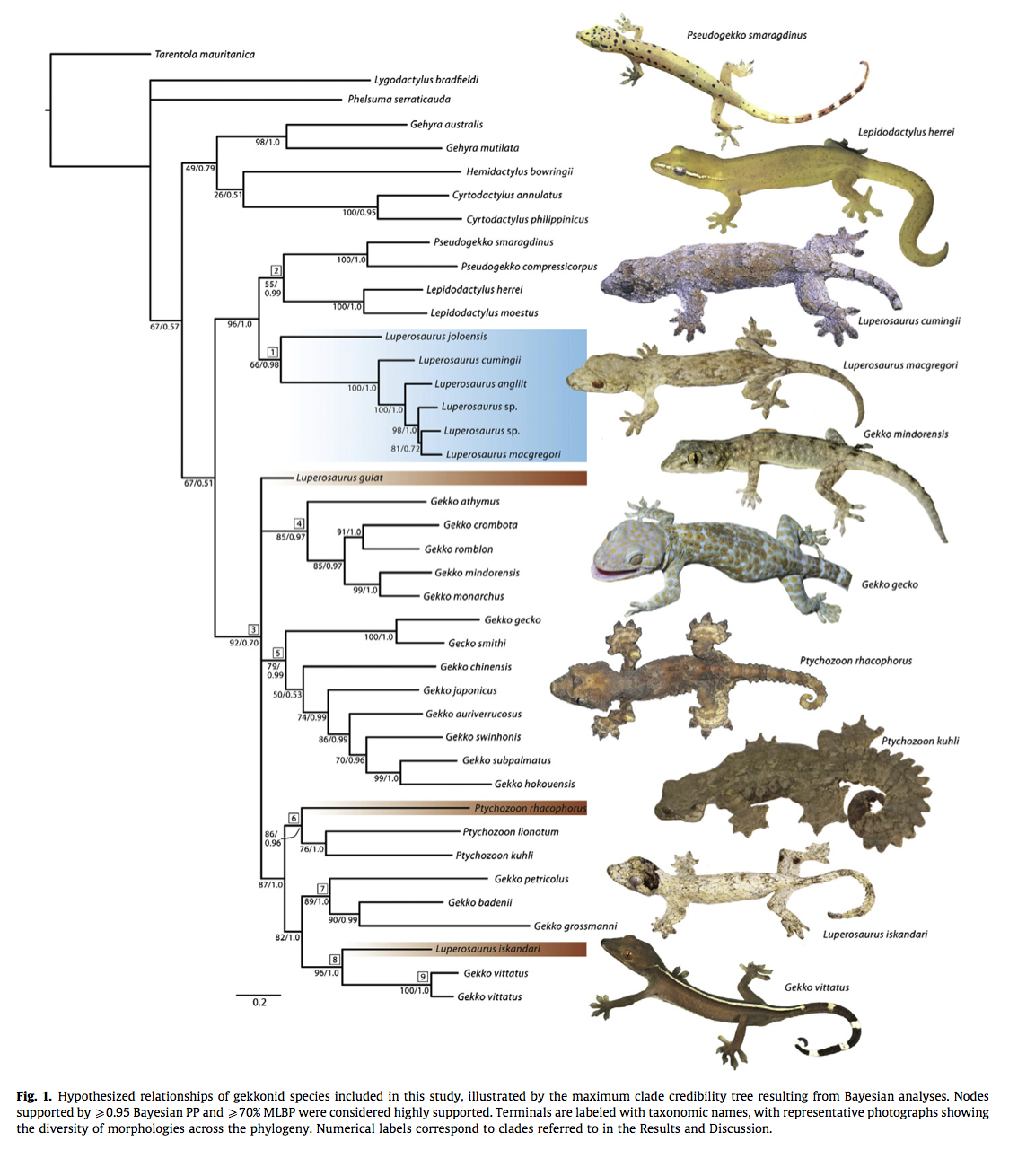Flap-legged Geckos and Parachute Geckos: How Do They Relate?

An understanding of the evolutionary processes that produce a region’s biodiversity is key to conservation. In Southeast Asia, there has been a lack of biodiversity surveys due to inaccessible forests and difficult areas to study. This, in addition to the slow pace of taxonomic work, logistical complications with field work, and the sheer amount of diversity in the area has led to a lack of understanding of the important evolutionary history of many species. Some of this region’s most poorly known and rare vertebrates are “Flap-legged” and “Parachute” geckos of the genera Luperosaurus and Ptychozoon. This study aims to understand the evolutionary relationship between these genera, along with the genera Pseudogekko and Gekko, as well as resolve discrepancies in existing phylogenetic trees.
Genetic testing was performed by extracting genomic DNA from lizards in species in each genus. While Gekko had been considered one large, inclusive branch on the phylogenetic tree, the genetic analysis shows otherwise. Many lizards had been considered to be in the genus Gekko because of similar morphologies. However, some of the morphologically different lineages within this clade, or branch, have been recognized as the genera Luperosaurus and Ptychzoon. Luperosaurus was found to be more closely related to Lepidodactylus and Pseudogekko than to the genus Gekko. However, even within these clades are problems. At least two species currently known as Luperosaurus appear to belong to a different clade, consisting of species from Gekko and Ptychozoon.
Since there are so many discrepancies, additional studies with greater sampling will be needed to learn more about these evolutionary histories. Additionally, existing trees will have to be rearranged based on the existing data. For example, since the genus Gekko is paraphyletic, or missing several species, such as Ptychozoon and Luperosaurus, taxonomic rearrangements will need to be made. This can be done by subdividing the genus Gekko or placing the genus Ptychozoon into the genus Gekko.
Having a better knowledge of these phylogenies is important because it allows us to have a better understanding of the patterns of endemism and concentrations of biodiversity. This allows us to prioritize the conservation of divergent evolutionary lineages and use resources more wisely. Understanding these various species will also allow us to understand how to protect them from problems such as deforestation. Taxonomic revision of these species of lizards will be a priority for studies in Southeast Asia.
— Matthew DeRuyter
Brown, R.M., C.D. Siler, and I. Das. 2012. Testing the phylogenetic affinities of Southeast Asia’s flying geckos: flap-legged geckos (Luperosaurus), parachute geckos (Ptychozoon) and their relationship to the pan-Asian genus Gekko. Molecular Phylogenetics and Evolution 63: 915–921. pdf
